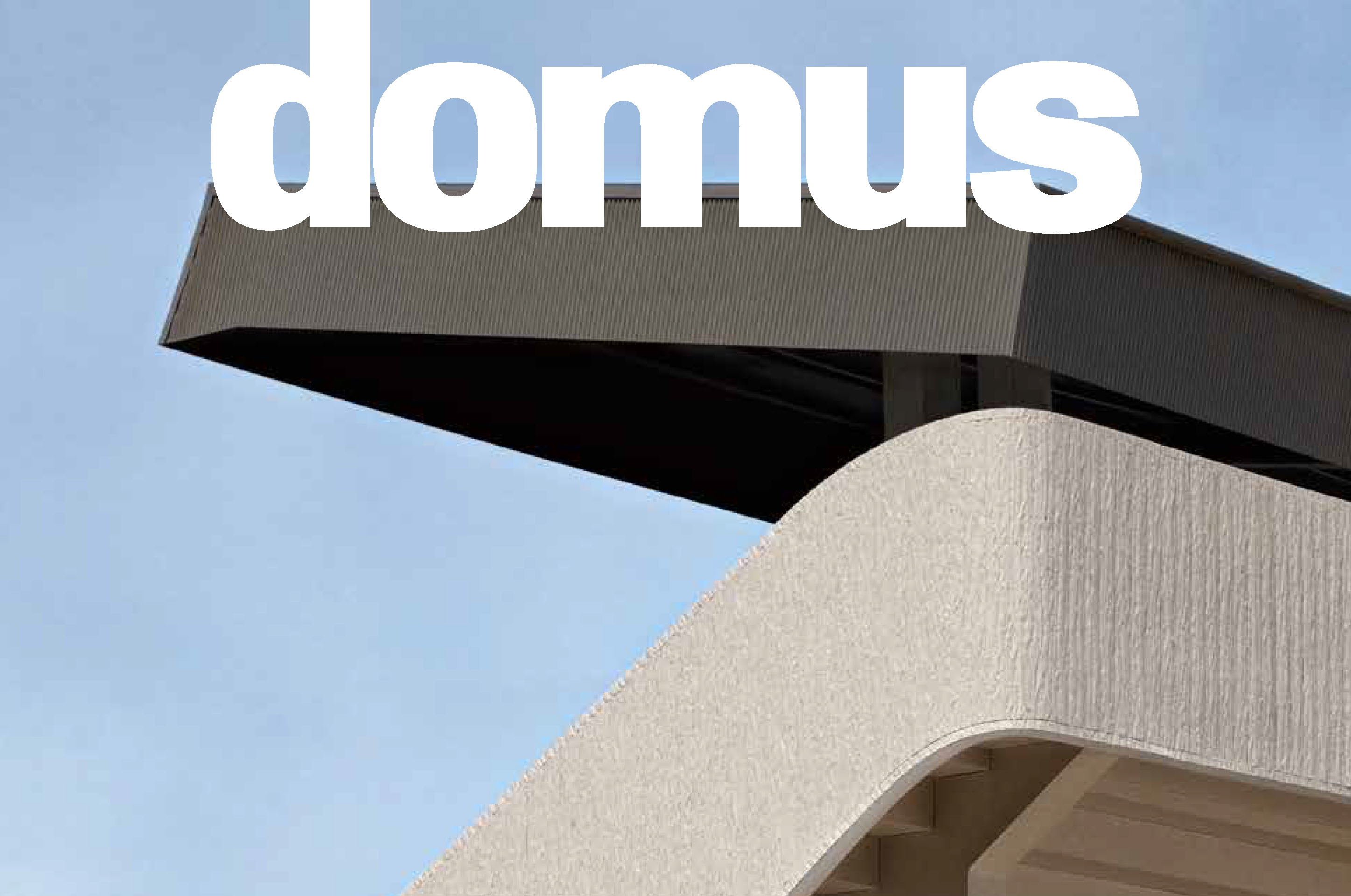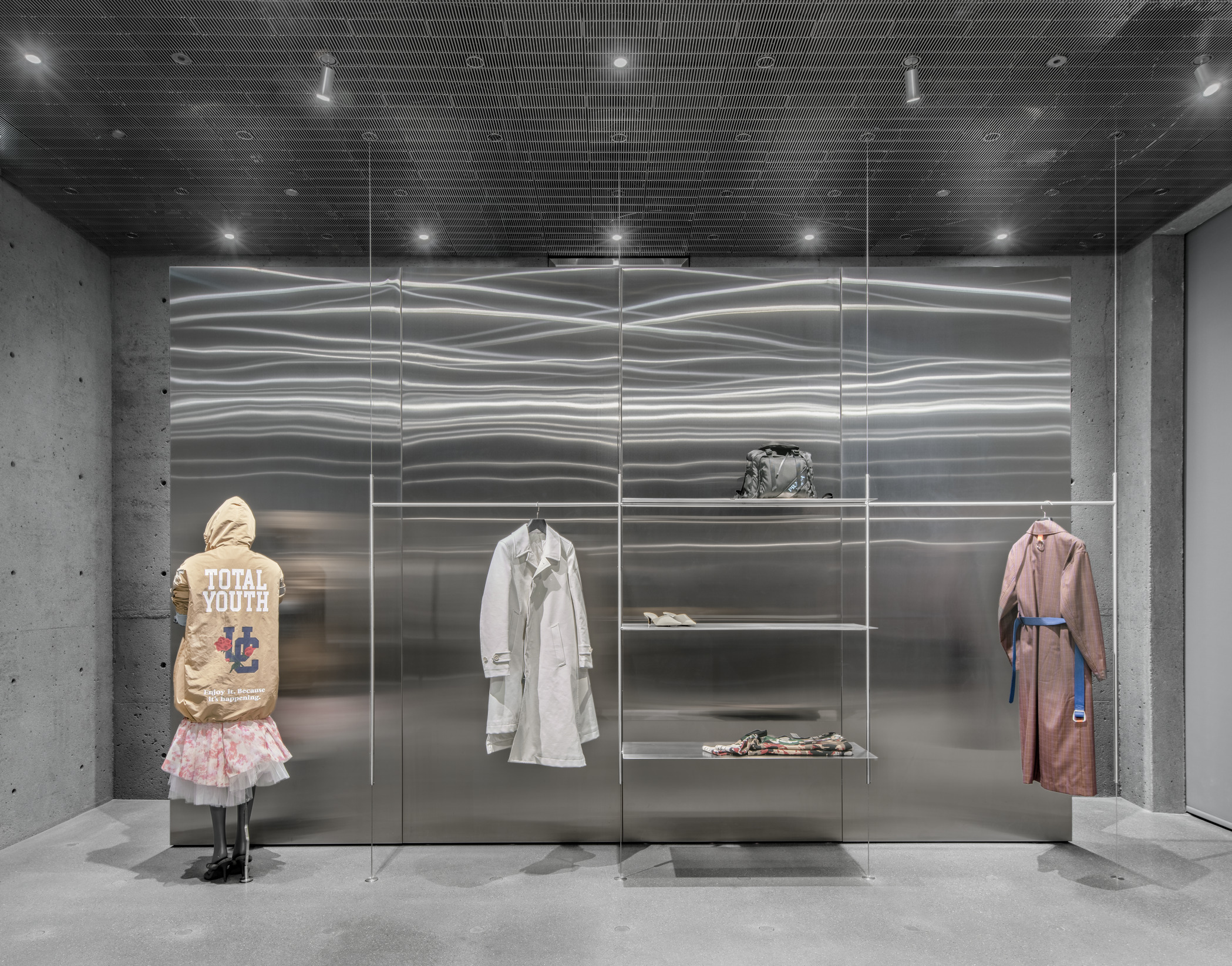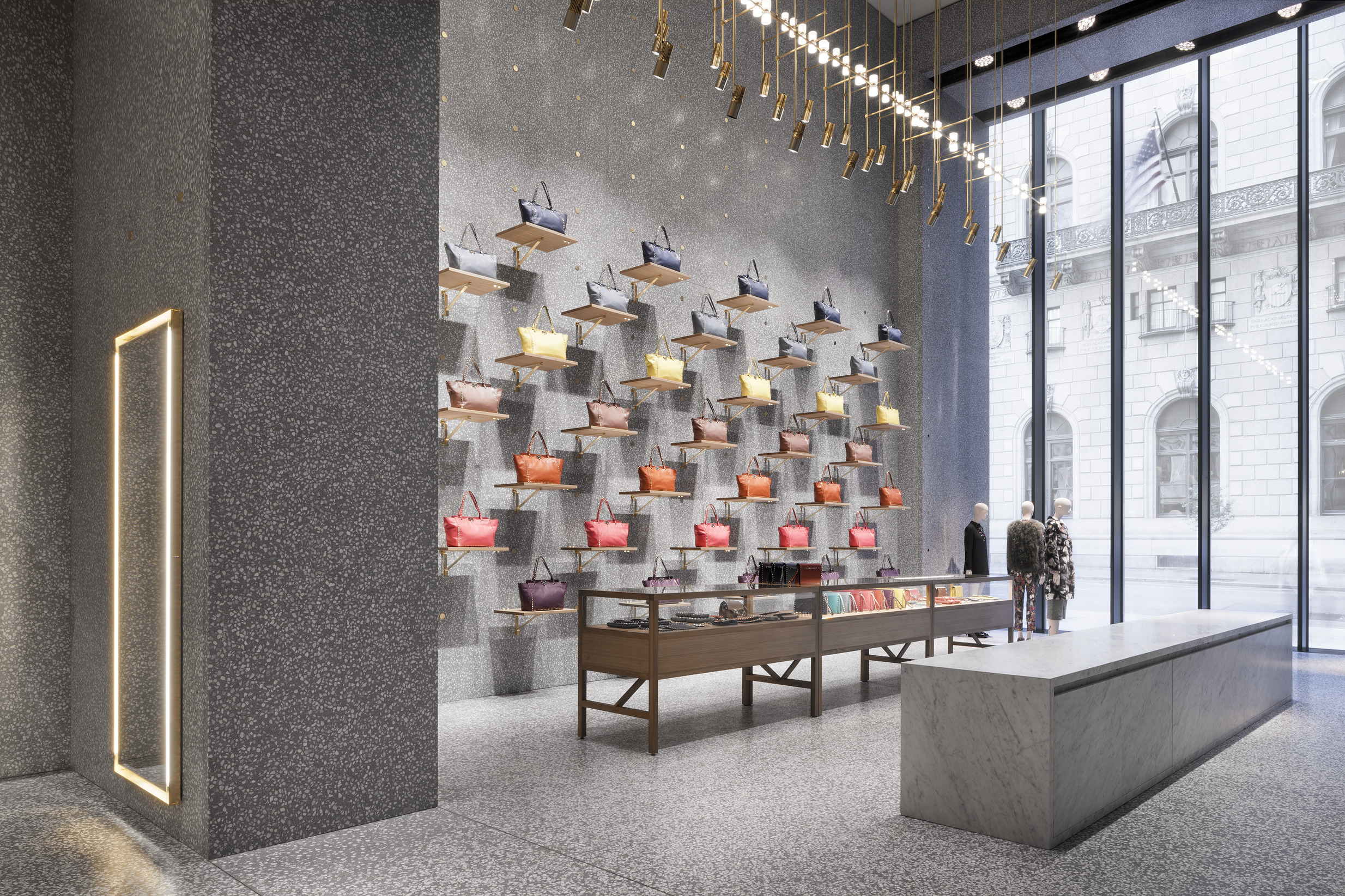Some remarks by David Chipperfield delivered at a Handelsverband Deutschland conference at Soho House in Berlin on 22 September 2014. The event was part of a programme entitled “Denken und Handeln” (“Thoughts on Commerce”) which addressed the economic, social and environmental challenges ahead for cities, and the role retailers and commerce can play in their future development.
I was asked to talk about retail in the context of our town centres and our cities. My briefing identified concerns about the influence of the interactive world on the physical world in relation to retail. How will changing demographics and changing shopping habits influence retail and in what ways will our cities reflect this change?
Clearly this is stimulated by a concern in the retail sector about the influence of on line shopping and phenomena like Ali baba I presume the question is how can 'physical shopping' survive and what role can the physical environment play in this process.
It is clear that this tendency towards on line shopping has contributed to the reduction of shopping in our town centres and to the consequent issues that this has produced.
In England the demise of retail in town centres has been identified not only as a problem for retailers but has resulted in the physical running down of central areas. In turn this has contributed to behavioural and social problems. This sets into motion a process that is difficult to stop. In fact it starts a sort of chain reaction.
A few empty shops start to create a sense of neglect; the combination of empty shops, closing businesses starts to create an atmosphere of failure and neglect which in turn puts off retailers and shoppers alike. The collapse can be very quick. But it is also clear that it can be turned around.
I have tried to put my thoughts into a larger consideration of the current tendencies in retail and their effect on our cities and our society. My perspective has not been that of the retail industry but rather that of the built environment, not only what is good for retail but what is good for our cities and our society.
This perspective however accepts that good retail is an important if not vital contribution to a healthy urban and civic environment. Indeed I will argue that the development of our cities and the considerate creation of civic and commercial public space is critical to urban life and that conversely a coherent and integrated public realm is critical to supporting a vital commercial environment.
Shopping and the city
The city and shopping have always been totally interconnected. People came together to trade, to make things and to sell goods and services. The origin of the city is inextricably linked to manufacture, business and trading.
Beginning with the agora, the market square, the arcade, the C18 galleria and the introduction of the department store in the C19, shopping has always contributed to the form and to the public spaces of the city. These historical forms were integrated into the city and responded to the social as well as commercial role of shopping.
While these generous and identifiable urban/ commercial structures establish clear territory for retail with a civic presence, it has been generally the case that shopping finds its place organically within the city. It seems to work best when it is a part of the city and is integrated with the residential and normal life of the city.
The galleria, the market square, the department store, the arcade are all structures that attempt to integrate the desire for larger retail infrastructure into the normal fabric of the city. In other words they took on forms that contributed to the idea of public space. These retail urban mechanisms remain in my opinion exemplary in that they elaborate the social and civic scale of the city. They give form to the collective aspect of shopping and take advantage of desired scale by their contribution to the city and its public spaces.
As architects and planners we still see the potential of shopping and the related entertainment activities as fundamental the city and to the quality of urban life.
While we hold these images in our heads, the shopping street, the Arcade, the galleria, even the department store, so often the realities of retail and the city are different. Shopping has so often taken on forms that make little attempt to contribute to the social and urban qualities of the city. Instead we seem to have created dense and un integrated leisure zones dominated by shopping eating and drinking. The more dedicated these areas become to this the more they become isolated from the normal fabric of the city.
Scale, investment and retail
There are a number of major challenges to a more convincing integration of retail and the development of our cities. Most of these issues are related in one way or another to scale. While the examples I have given deal convincingly with one type of scale ie a cumulative assembly of shopping, there is another type of scale that is more difficult to deal with and is fundamental to our present condition, that is the scale of the shopping unit itself.
Small or medium scale units are quite easy to organise around the spaces of the city, spaces determined by normal activities. Spaces that are familiar to us and conducive to a good urban quality of life. However the larger structures, larger both physically and commercially, that are required or at least encouraged by retail are increasingly creating an artificial distance between shopping and the normal and diverse qualities that we regard fundamental to urban life. This change of scale may be appreciated by the shopper in terms of convenience but I'm not convinced that it is demanded by us. Furthermore as I have already tried to show, that while the desire to consider the urban qualities of the city is not necessarily generated by commercial criteria, this doesn't mean that it doesn't make commercial sense to do so.
This problem of scale is represented in its extreme and most visible form as out of town shopping centres, but increasingly new developments driven in part by the commercial potential of retail tenants, provide large flexible floor plates attractive to anchor units, which demand singular and hermetic presence and positioning.
The case is commercially clear and understandable. We can also see it working in practice. It is not easy to deny the logic. Moreover isn't it better that these units are in town rather than in out of town shopping sprawls? Indeed in some cases such interventions in the city, well-handled can stimulate existing retail and contribute to the architecture and public space of the town centre.
This may be the case but the fact remains that such an approach often conflicts with the desire to make urban space the dominant structure (which I argue is the guarantee for a sustainable city).Small units can be organised around a larger idea of public space .Big stores demand that the city organises around them. In fact their interiors become a sort of ersatz public space as they have their own circulation and have no real need of the street. As a further consequence the shopping street is reduced to a means of reaching the main entrance as large scale buildings tend not to want many entrances. In this way shopping centres not only fail to create good civic space but even tend to weaken it.
This internalisation of retail, justified by the demands of scale is critical to the discussion of shopping and the city. Not only does it tend to turn its back on conventional scale and structure but more ambiguously through the inevitable repetitious and convenient presence of global brands and the cleansing of shopping areas of independent and diverse retailers, the city no longer looks or behaves like the diverse meeting point of activities but the rather over rehearsed and calculated result of retail forces housed in a synthetic imitation of the city we still long for and remember fondly.
Gradual alienation
Shopping has changed scale and even role. The simple and informal transaction of buying bread from the baker (where the bread is made) or our newspaper or even our vegetables has been replaced in most cases by a more efficient process of production and distribution. This has changed most of our shopping from a process that has a strong social and human role in our towns and cities to a more practical transaction, specialised and isolated.
We cannot only blame retailers for this tendency. Although clearly driven by market forces of scale and efficiency, it panders to our own desire to save time. We want to do things more quickly, we don't have time to engage in dialogue; I want a loaf of bread, not the local gossip interpreted by the baker’s wife.
Despite this we still can't free ourselves of this image of the shop: as a social place as well as a practical mechanism. We admire them when they exist in exotic places, we love the informality and apparent sociability of markets, we indulge in the ritual of 'slow' shopping when we are on holiday and we lament when a corner shop closes or even when a store changes ownership out of fear that we have lost something of our social fabric.
We persist in trying to find social connection and familiarities even within this new efficient world and even in the deepest corners of the supermarket or shopping mall, designers are commissioned to make things look like they used to be. Retailers use devices both decorative and organisational to try to reassure us and remind us of the qualities that have been abandoned but not forgotten.
What drives the change in scale?
Is this change of scale necessary? We know it’s driven by something called the market but what does that mean?
As far as this affects our built environment there seems to be two forces that combine. Firstly the retail world’s singular obsession with growth; secondly the willingness of the real estate market to deliver convenient and uncomplicated environments, integrated with relevant infrastructure and the commercial security of critical mass.
Finally we have to accept that finance and investment is much less interested in 100 small ventures than in one or two big ones. In other words, investment motivates big projects not small ones. How can we create a more organic type of city (as history has given us) when investment gravitates to large scale?
Scale driven by consumptions
The last 50 years, which coincides with my lifespan as a conscious consumer, has witnessed a dramatic shift in what we buy, the amount we buy and why we buy. We have moved from a consumption dominated by what we need to one dominated by what we want. While there is a clear limit to what we need, there is no limit to what we might want. The shift from necessity to desire opens up all sorts of issues.
One of the factors that has been responsible for a change in scale and that has taken advantage of the expanding potential of what we might buy is the desire by investment for growth. Listening to financial news it is difficult to understand when a company like Marks and Spencer has a 3% fall in profit. One year they make £690m and the next year they make £675m. They sound like pretty similar figures to me; no real reason for a collapse in share price and all that comes with it.
Of course what we are taught to understand is that investment expects growth; shareholders expect growth. Growth is the measurement we use to gauge success. Furthermore we are told the economy needs it. Confusingly though, we are told that this is not what the planet needs. If we want to save the world we should consume less, if we want to save the economy we must buy more.
Choice replaces quality
Presumably we have to accept that retail wants to sell as much as possible, but we also know that what is really critical is profit, not necessarily turnover. This is the only way we can attempt to reconcile the contradiction that I have described between commerce and sustainability. However, if we really wish to confront sustainability we have to accept that there will have to be real and substantial changes to our seemingly endless proliferation of products, of waste, of redundancy and endless choice.
Let me take a short detour. The ethos of great post-war design was related to economy, the economy of means. There was something modern that stripped away unnecessary decoration and expressions of indulgence in favour of simple forms, utility, honesty of form and material. Engaging contemporary production techniques and good design, we created objects that were of our time and most importantly addressed the overriding egalitarian ambition of the best design for the most people for the lowest price.
What an innocent time, when quality, value for money and ‘made to last’ were the slogans. We now know that we need to be seduced to buy a different one, a better one, a newer one. But who really needs two watches? Only if I'm convinced that it’s a lifestyle choice not just a timepiece on a leather strap. I’m not sure we can ever return to the good old days – two pairs of shoes, a dark suit, half a dozen white shirts!
However I believe that we must reconsider the basic principles of retail that are at the moment becoming contaminated by the two major issues concerning peaceful societies: unsustainable, excessive and wasteful production and the flaunting of extreme disparities of wealth through excessive proliferation of luxury consumer products of questionable value.
Retail, leisure and the city
While these issues are beyond the boundaries of my topic they should form the context to any discussion about the city and shopping, because as I have tried to illustrate, shopping is its own enemy if it doesn't include criteria beyond growth and scale.
I believe that the health of our towns and cities is tied together with the role and potential of shopping.
If retail wants to operate at a bigger scale than just convenience, selling us necessities and locating in pre-existing shops, if it wants to muscle into and even inadvertently be part of the process that shapes our cities by being partners in development, then it must be aware of the long term as well as the short term.
We are finding it increasingly difficult to coordinate large-scale investment with individual and societal expectations. In this struggle shopping and recreational space is critical to the idea of making what we would call public space. It is clear that we have a new type of public private space.
As the public sector becomes less capable of delivering the public spaces of our cities, the private sector is creating a sort of private public realm. Shopping is a leading player in this formula.
Retail is a volatile business; it goes through different changes and will continue to do so. We cannot be relied on to maintain our same enthusiasm for shopping in the form it currently takes.
What we can be confident in is that we are social creatures and we like to meet and congregate within our city and town centres. Despite knowing this we seem incapable of organising ourselves to create or improve the buildings and spaces that give form to the type of places where we want to spend our time.
We flock to historic centres because we like the scale and diversity of their buildings and spaces but then we ignore what we know when it comes to redeveloping our towns and cities.
If we are serious about creating better cities and towns and keeping local shops then we shouldn't be encouraging out-of-town shopping centres or large-scale introverted shopping malls: they create shopping ghettos that contribute nothing to our built environment and instead take people away from the areas where development may be more difficult. But this difficulty engages more fundamentally with the reality of the town or city.
Whether we like it or not we are going to have to change our habits if we want a more sustainable world. The retail industry has a big role to play in this change. If it holds on to the conventional criteria of growth and scale then change is not possible. For its own future it must re-examine its contribution not only in terms of wealth generation and employment but how it contributes to a better society, both through the products it develops and in the environment it creates.
The interests of retail are tied up with the health of our towns and city centres. We must hope for a more intelligent alliance between the planning departments, investors and the retail industry. If we keep making ghettos of shopping centres without paying regard to the larger issues of the city then it’s difficult to see why we should want to spend our time shopping instead of ordering online from the comfort of our own homes.



